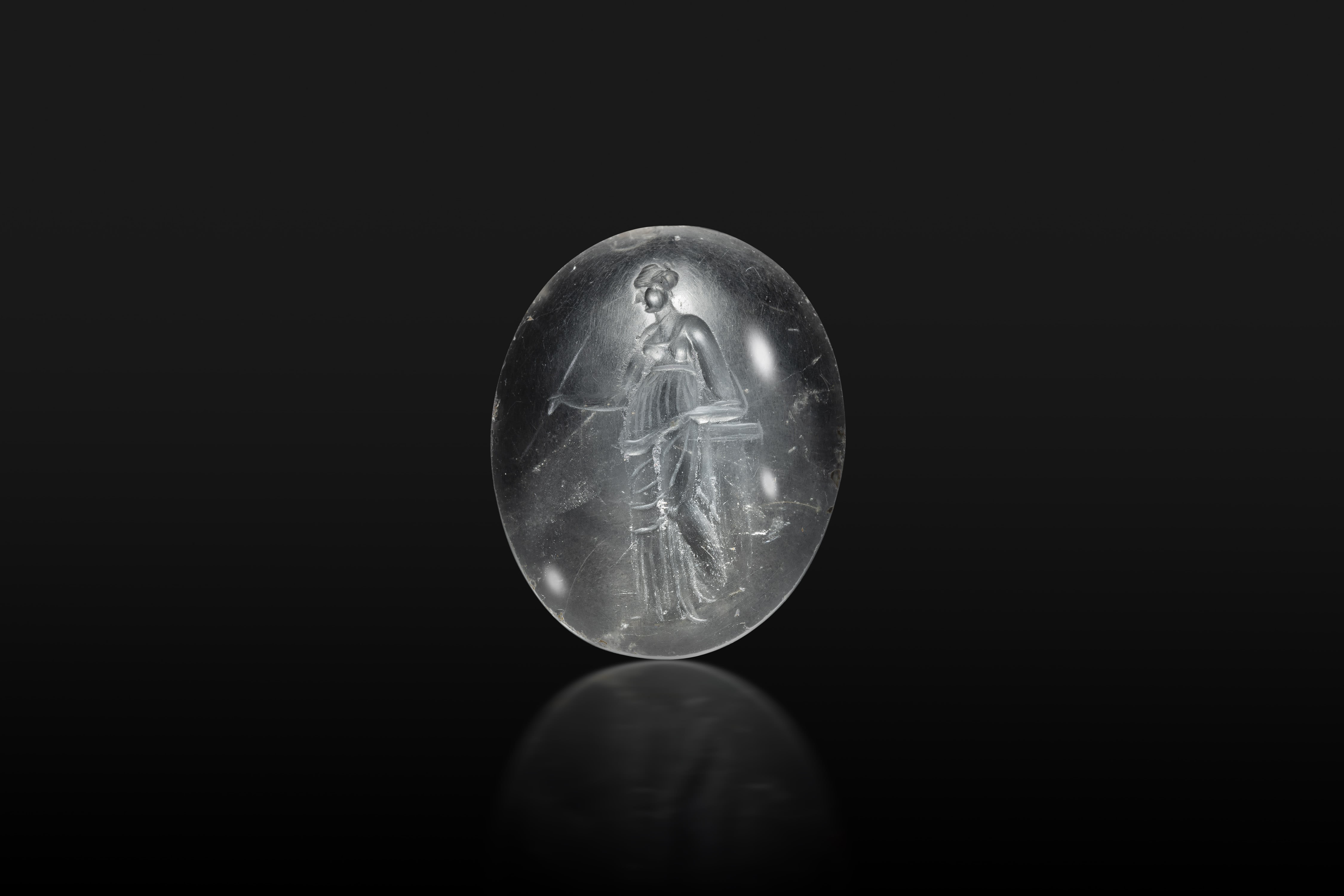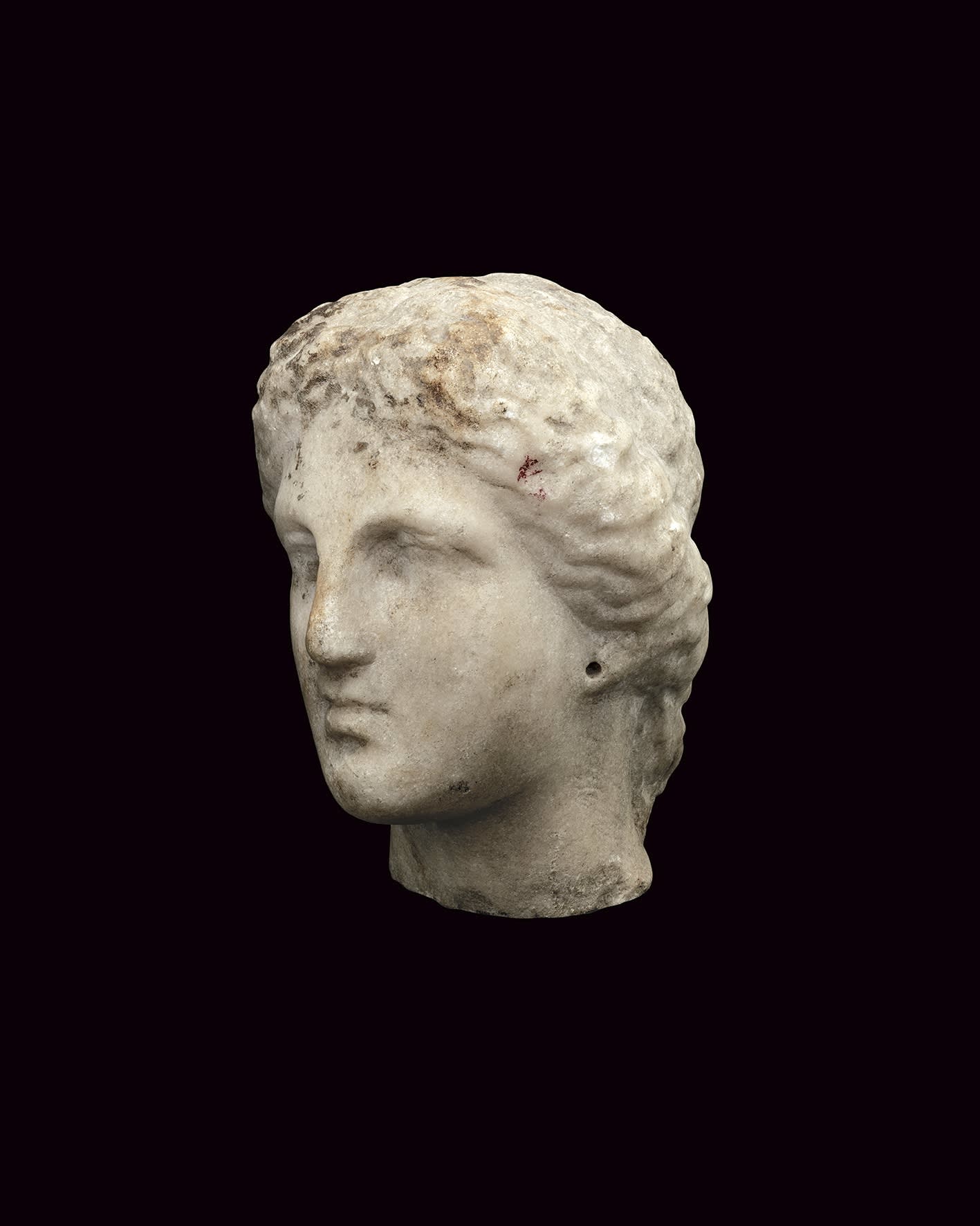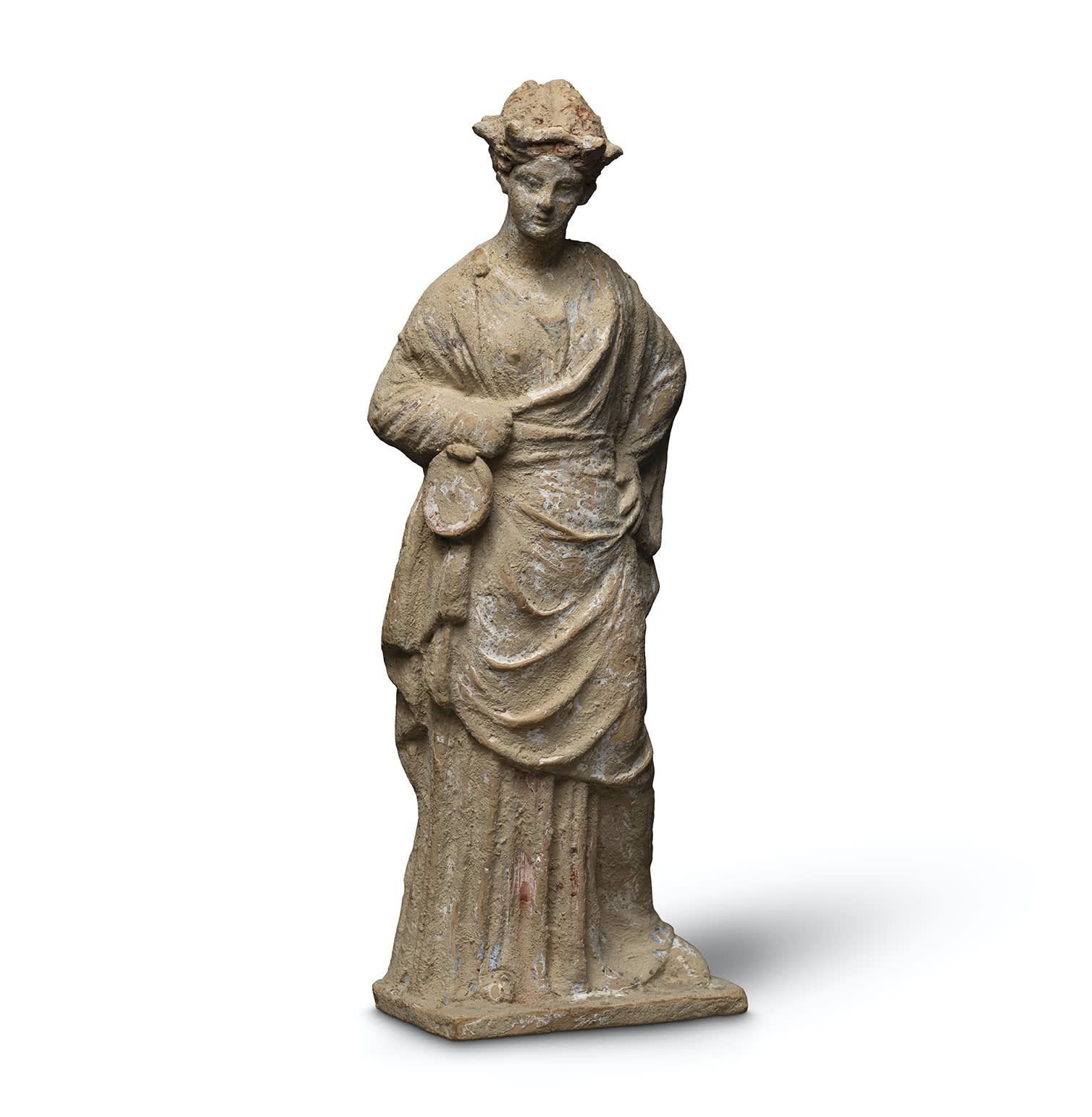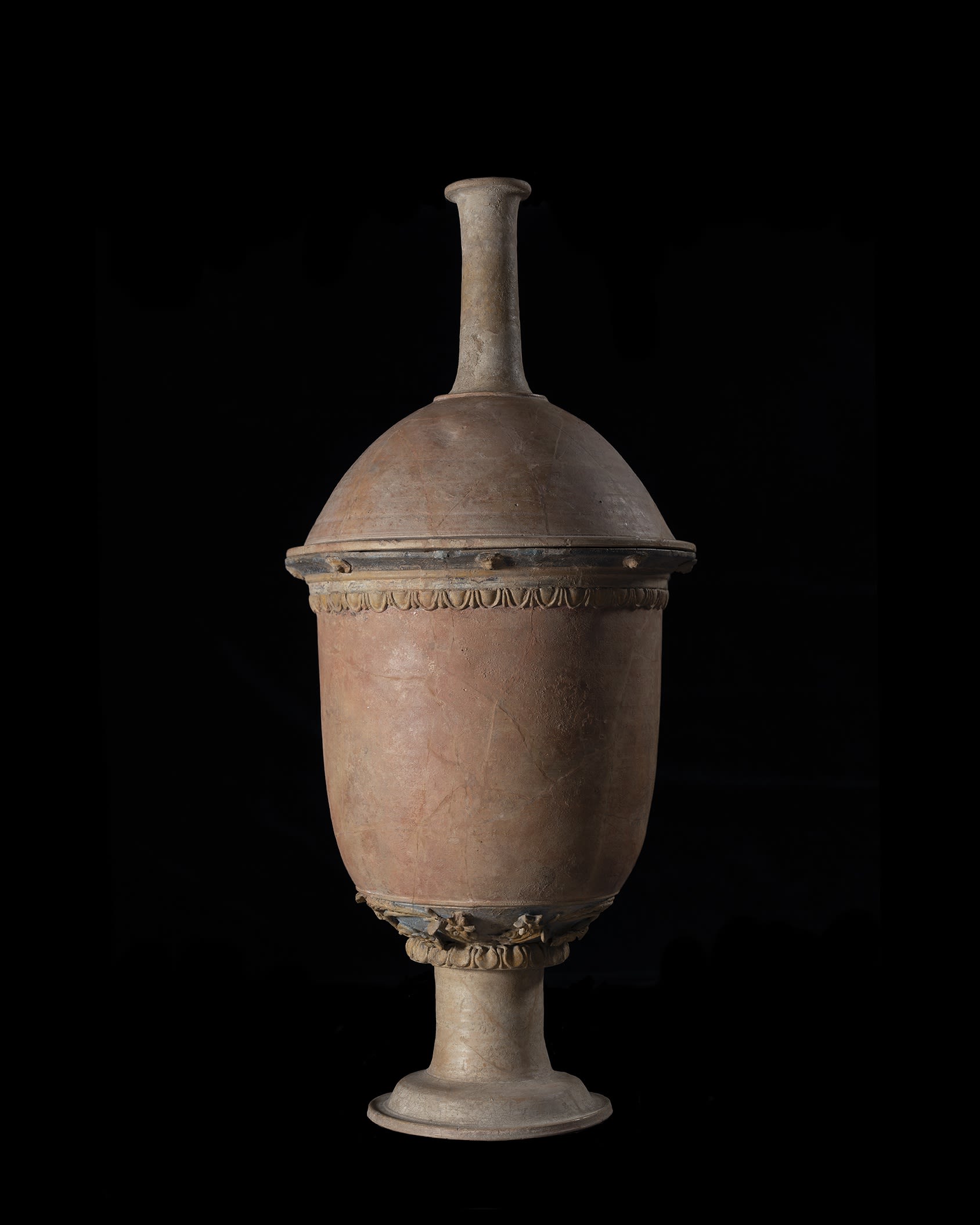Hellenistic Women and their World
November 6, 2024

The ancient sources and visual arts demonstrate that during the Hellenistic era, the life of women was vastly different from what it had been in the preceding periods. It was a time of remarkable mobility, for men and women alike.
The contrast between the position of women in Hellenistic societies and Classical societies is especially evident in relation to royal women in the Hellenistic period who were highly politically active, competing in a traditionally male arena to gain power and influence. But this was not limited to royalty and generally the legal and economic position of women increased substantially. This appears to be partly due to an expansion of maritime communications and trade, and the resulting contact with Dorian cities, in which the status of women was different.

A GREEK ROCK CRYSTAL INTAGLIO OF A WOMAN
Hellenistic, circa late 3rd - 2nd century BC, Length: 2.9 cm
Hellenistic, circa late 3rd - 2nd century BC, Length: 2.9 cm
The epigraphic evidence shows that Hellenistic women were allowed to own property and wealth, with women receiving honours for their services, especially in religious spheres; they could even hold office. Female education also increased, as we see several female philosophers, poets, and writers emerge.

Hellenistic, circa 4th - 3rd century BC, Height: 12 cm

A GREEK TERRACOTTA HEAD OF APHRODITE
Hellenistic, circa 3rd century BC, Height: 10.4 cm
Hellenistic, circa 3rd century BC, Height: 10.4 cm
Works of art shed light on these changes and the increase in depictions of women in sculpture, a distinctly public form of art, illustrates a marked change in the general mind set towards the female body. In particular, the coroplastic workshops, with creations that represent ordinary females, their fashions, accomplishments, education, activities, offer particularly illuminating images of Hellenistic women. These figurines, with their clothing and coiffures, represent ordinary women participating in festivals or funerary rites. Greater freedom is seen in their dress, hairstyles, and movement, as well as in the objects that they hold, such as fans, musical instruments, mirrors, and vessels.

